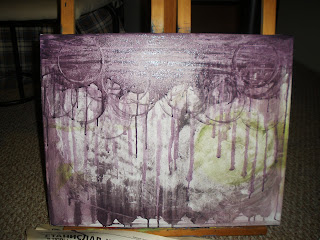After doing some research and relying on previous knowledge, here are some of the uses of social media that I came up with.
Marketers these days are using social media to convey information to their target markets or consumers. Several companies are using Twitter this way, as a channel to get out news about their company. The positive from this kind of social medium is it spreads message in real time and it has the potential to spread virally. For example, stores like Whole Foods keep links to recipes and daily deals on their Twitter. Also several companies, like T-shirt company StreetWear, use blogging as a way to transfer information to their consumers about new designs, new releases, etc.
Another amazing use of social media is for non-profits organizations and support for causes in healthcare. Brands attempt to get as many fans as they can and get people to “like” their page on Facebook. One good example of this the Cervical Cancer Awareness Facebook page. People can “like” the page and find out information about Cervical Cancer as well as the preventative vaccine, Gardasil. It is interesting to note that Merck did not create a Gardasil brand page and ask people to become fans of their brand. I’m assuming they understood that most people would think it was strange to be friends with a big pharmaceutical product especially a vaccine. Instead, Merck went with a different approach and created a “semi” unbranded page called Take a Step Against Cervical Cancer; instead of being a fan of Gardasil, they ask you to be a fan of fighting cervical cancer. This is something very relatable since mostly everyone is a fan of fighting cervical cancer. The strategy was successful; currently there are almost 120,000 fans. The biggest advantage of something like a Facebook fan page is that there is a low barrier for people to join, it is easier for people to share and become “fans”.
Social media is also great for consumer research and community building. Facebook has become the ultimate diary for marketing research. Companies can see what music you like, what products you like, what movies, art, brands you prefer. Based your preferences they can create a persona for you and have ads pop up on the side that are relevant to you. One good example of a company that utilized social media to gather customer data was Atkins, the weight loss program. The company noticed that consumers that were using the Atkins program were getting online and talking about their attempts to lose weight, so the company created a social network to bring these conversations within the Atkins brand. Atkins created community.atkins.com with social network provider Powered; the site gives Atkins a two-way dialogue with consumers and provides members with tools to interact with each other and learn about the company’s products. The site does not actually sell products, its main purpose is engagement and building brand loyalty through communication. Currently the site has about 200,000 registered members and growing. Not only does this site provide a place for people to talk to each other but it allows Atkins to collect qualitative feedback to send to their development team and improve their products.
Finally, social media is great for customer service in specific industries. For example, Twitter is a popular place for customers to complain and require customer service; companies like Comcast and Best Buy have gotten great press from the customer service they are providing via Twitter. The service is in real time and provided by real people, its low-cost and shows a brand’s sophistication. Also, it can stop a disaster before it starts by fixing problems and attending to customer’s needs instantly.
Overall, social media is changing the way companies do business; it is generating more conversations between consumers and suppliers, it is speeding up the process of communication by working in real-time, and it is making companies more personable and accessible to consumers.






.jpg)
















.jpg)
